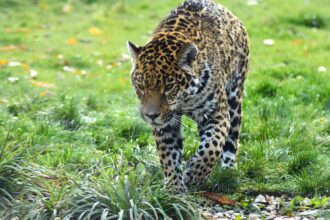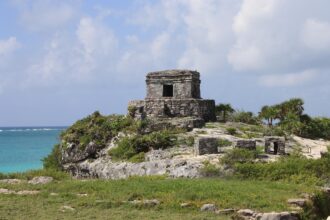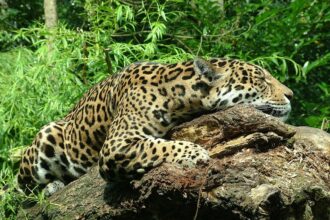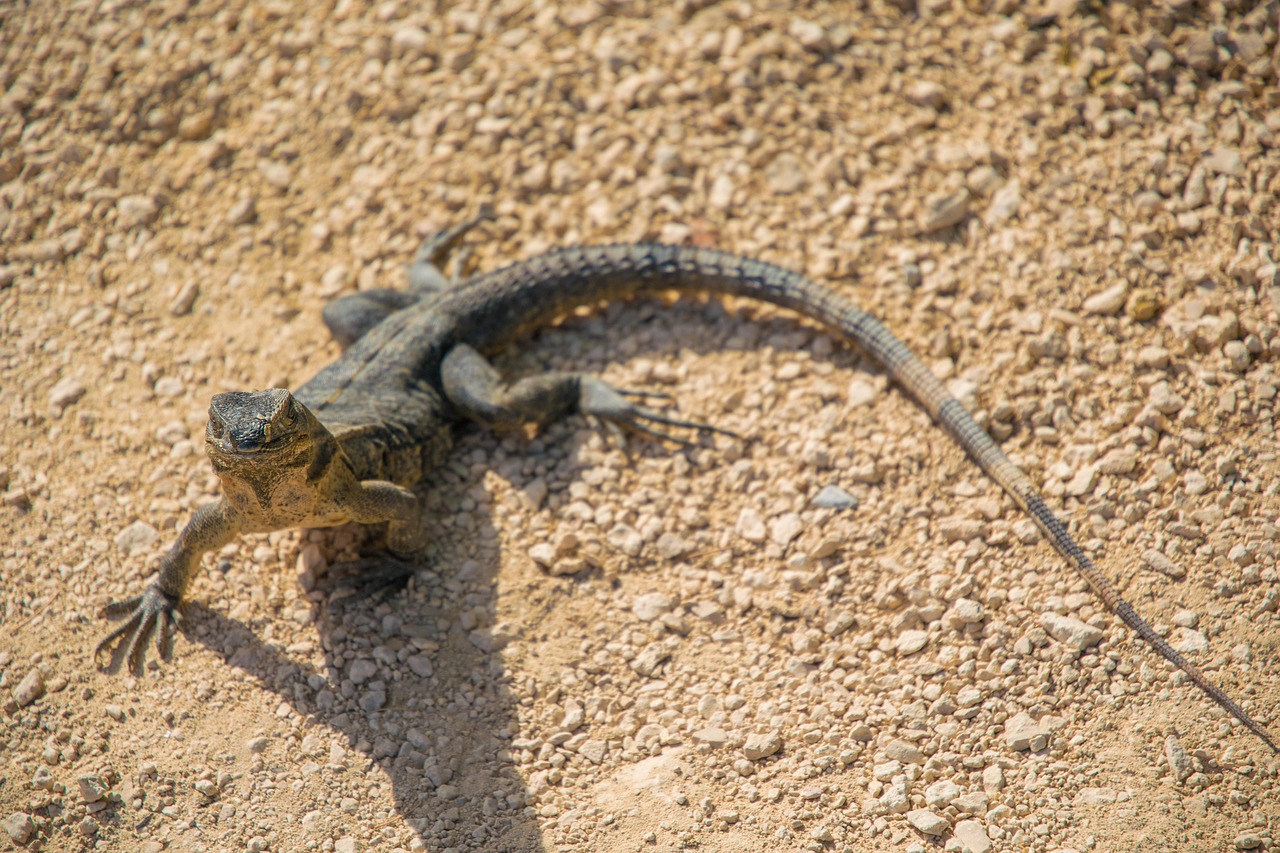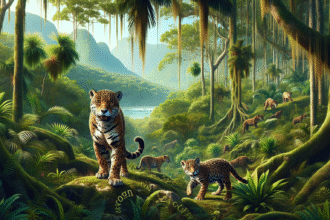The Ecological Importance of Tulum: Home to the Majestic Jaguar
Tulum’s Unique Ecosystem
Tulum, situated on the eastern coast of Mexico’s Yucatán Peninsula, boasts a rich tapestry of biodiversity owing to its unique geographical features. With its proximity to the Caribbean Sea, lush tropical forests, cenotes, and a thriving marine environment, Tulum is a vital ecological hub that supports various wildlife species, including the majestic jaguar (Panthera onca), one of the region’s apex predators.
The Role of the Jaguar in Tulum’s Ecosystem
The jaguar is critical to maintaining the ecological balance in Tulum. As an apex predator, it plays an essential role in controlling the population of herbivores, such as deer and peccaries, which directly impacts vegetation growth and forest health. The presence of jaguars ensures that these herbivore populations do not overpopulate, which otherwise could lead to overgrazing and subsequent land degradation.
Biodiversity Hotspot
The lush jungles surrounding Tulum encompass various habitats, including tropical deciduous forests and mangroves. This diversity allows Tulum to serve as a refuge for several endemic species, including the jaguar. The interconnectivity of different habitats provides migration corridors for various animals, facilitating genetic diversity and resilience against environmental changes.
Threats to Tulum’s Ecosystem
Despite its ecological importance, Tulum faces numerous threats. Deforestation due to agricultural expansion, urbanization, and tourism development significantly disrupt jaguar habitats. Fragmentation of land leads to isolation of wildlife populations, limiting their movement and breeding opportunities. This poses a severe threat to jaguar survival and the health of the entire ecosystem.
Conservation Efforts in Tulum
Organizations such as the Campeche State Wildlife Conservation Program have implemented various strategies to protect the jaguar and its habitat. Community education programs and wildlife monitoring initiatives aim to raise awareness about the importance of preserving the jaguar, fostering a sense of stewardship among local communities.
The Role of Protected Areas
To protect the majestic jaguar and its habitat, various protected areas have been established in the Tulum region. The Sian Ka’an Biosphere Reserve is one of the most significant conservation areas, encompassing wetlands, mangroves, and tropical forests. This UNESCO World Heritage Site provides a vital sanctuary for jaguars and countless other species, ensuring the conservation of Tulum’s rich biodiversity.
Ecotourism: A Sustainable Alternative
The blossoming ecotourism industry in Tulum offers a sustainable approach to environmental conservation. Many tour operators promote wildlife observation and responsible tourism practices that allow visitors to experience the natural beauty of the area. By highlighting the ecological significance of the jaguar and the diverse flora and fauna, ecotourism helps generate revenue for local communities while fostering awareness about conservation.
Community Involvement in Conservation
Local communities are increasingly becoming involved in conservation efforts. Through programs that highlight the cultural and ecological significance of the jaguar, communities gain a vested interest in protecting the wildlife. Livelihoods can be supported by alternative sustainable practices, such as organic farming or artisanal crafts, reducing the dependency on activities that threaten jaguar habitats.
Research and Monitoring Initiatives
Scientific research plays a significant role in conserving jaguars in Tulum. Ongoing studies focus on understanding jaguar behavior, population dynamics, and habitat use. Tracking jaguars with GPS collars allows researchers to gather vital data that inform conservation strategies and policy-making. Collaborative efforts between local and international researchers help ensure that conservation efforts are based on the best available science.
The Importance of Community Awareness
Raising awareness about the importance of jaguars is crucial for conservation efforts. Local schools and community organizations can implement educational programs that teach children and adults about the interconnectedness of ecosystems and the role of jaguars in maintaining ecological health. When communities understand and appreciate their native wildlife, they are more likely to engage in protective actions.
The Impact of Climate Change
Climate change poses a significant threat to Tulum’s delicate ecosystems, affecting temperature and precipitation patterns. As climate conditions shift, habitats may become unsuitable for many species, including the jaguar. Protecting and preserving ecosystems through responsible land use and sustainable practices is essential for mitigating these impacts and ensuring wildlife survival.
Jaguar Corridor Initiatives
Efforts are underway to create jaguar corridors—landscapes that connect fragmented habitats—enabling jaguars and other wildlife to move freely between areas. These corridors are crucial for maintaining genetic diversity and resilience in wildlife populations. Collaborative projects between governments, NGOs, and private landowners are vital to successfully implementing these initiatives.
The Ecological Significance Beyond Jaguars
While the jaguar is a symbol of Tulum’s ecological treasure, the region houses a multitude of other species. From various bird species to reptiles, amphibians, and countless plant varieties, Tulum’s ecological fabric offers invaluable contributions to global biodiversity. Healthy ecosystems provide ecosystem services such as carbon sequestration, clean water, and air purification, which are critical for human well-being.
Local Flora and Fauna Contributions
Besides their role in the food chain, jaguars contribute to effectively regulating and maintaining the integrity of the ecosystems. The prey populations that they manage drive vegetative growth. Furthermore, their presence supports a range of flora by maintaining the balance of herbivory within the ecosystem. As such, preserving jaguars in Tulum directly correlates with the health of numerous plant species and the overall vibrancy of the landscape.
Global Biodiversity and Ecological Interconnectedness
The ecological importance of Tulum extends beyond its borders. The preservation of Tulum’s ecosystems contributes to worldwide biodiversity, enhancing ecological networks that extend across the continent. By protecting Tulum, conservationists contribute to a broader global mission to safeguard vital ecosystems threatened by human activities and climate change.
The Future of Tulum’s Ecosystem
It is imperative for stakeholders—including government bodies, NGOs, and local communities—to collaboratively seek innovative solutions that promote sustainable land use practices in Tulum. Balancing development pressures with conservation needs is vital to the region’s future, ensuring that Tulum continues to thrive as a sanctuary for the majestic jaguar and its diverse ecological community.
The Essential Role of Education
Educational initiatives in local conservation efforts highlight the importance of preserving biodiversity. Workshops, nature trails, and informational signage encourage visitors and locals alike to appreciate the ecological wealth of Tulum. Sustainability education empowers individuals to make informed choices, contributing to a culture of conservation that benefits both the jaguar and the overall ecosystem.
Summation of Ecological Networks
Every species, including the majestic jaguar, plays a significant role in the ecological networks that define Tulum. Protecting and preserving this ecological marvel is not only beneficial for local conservation but serves as a reminder of the interconnectedness of life on Earth and humanity’s role in it.
Through comprehensive conservation strategies, community involvement, and support for sustainable tourism, Tulum has the potential to serve as a beacon of hope for jaguar preservation and ecological balance, ensuring that future generations can appreciate this extraordinary corner of the world.


